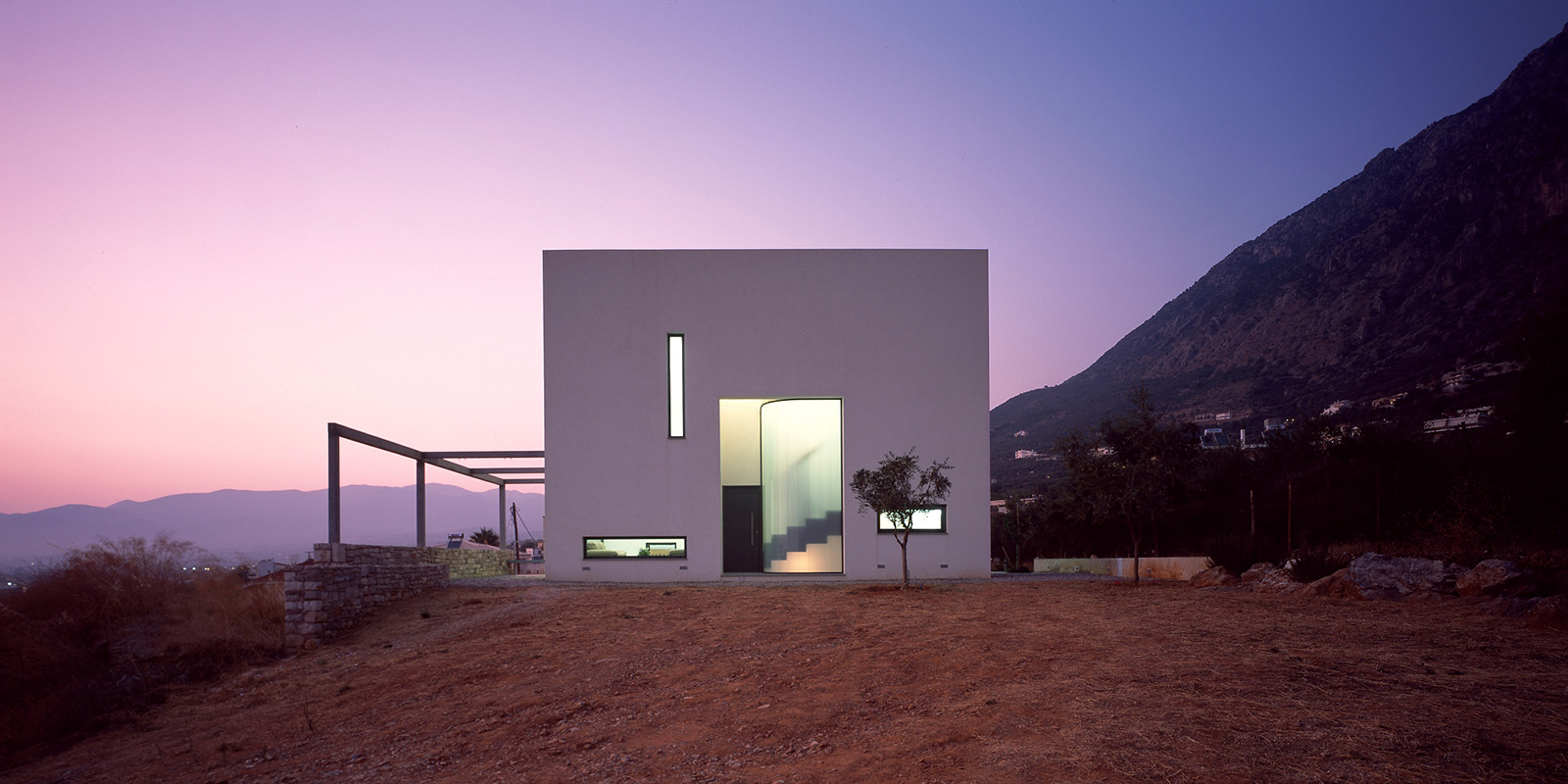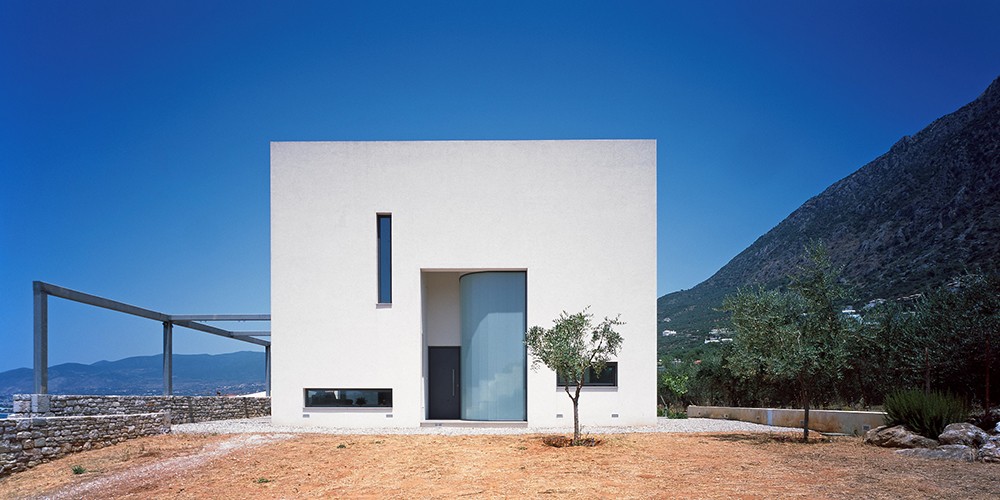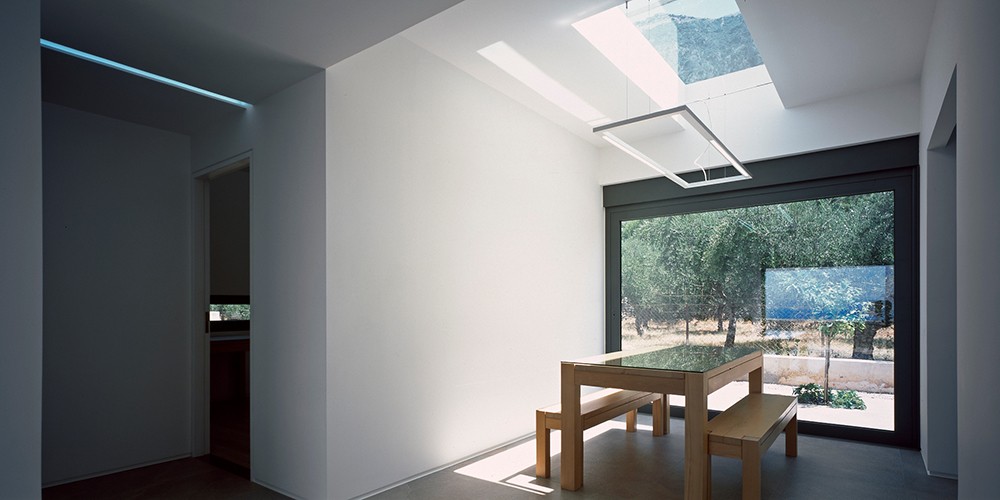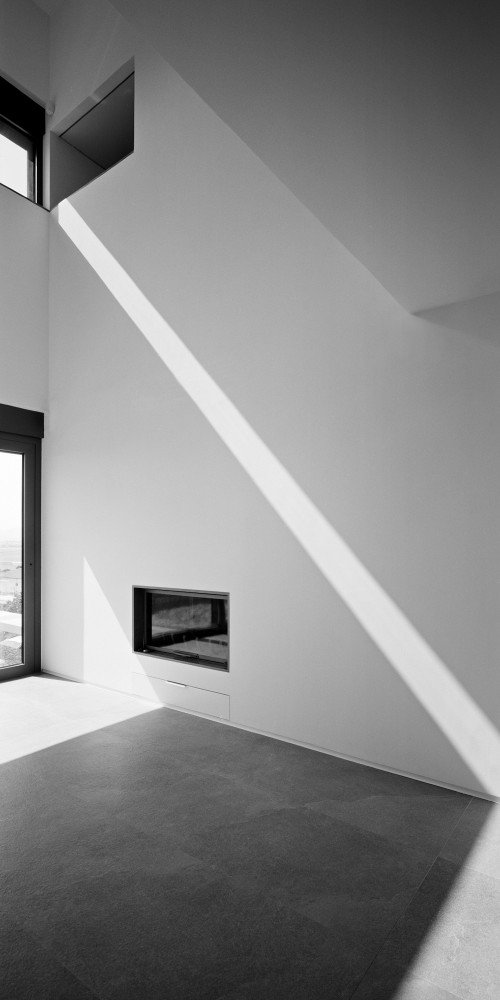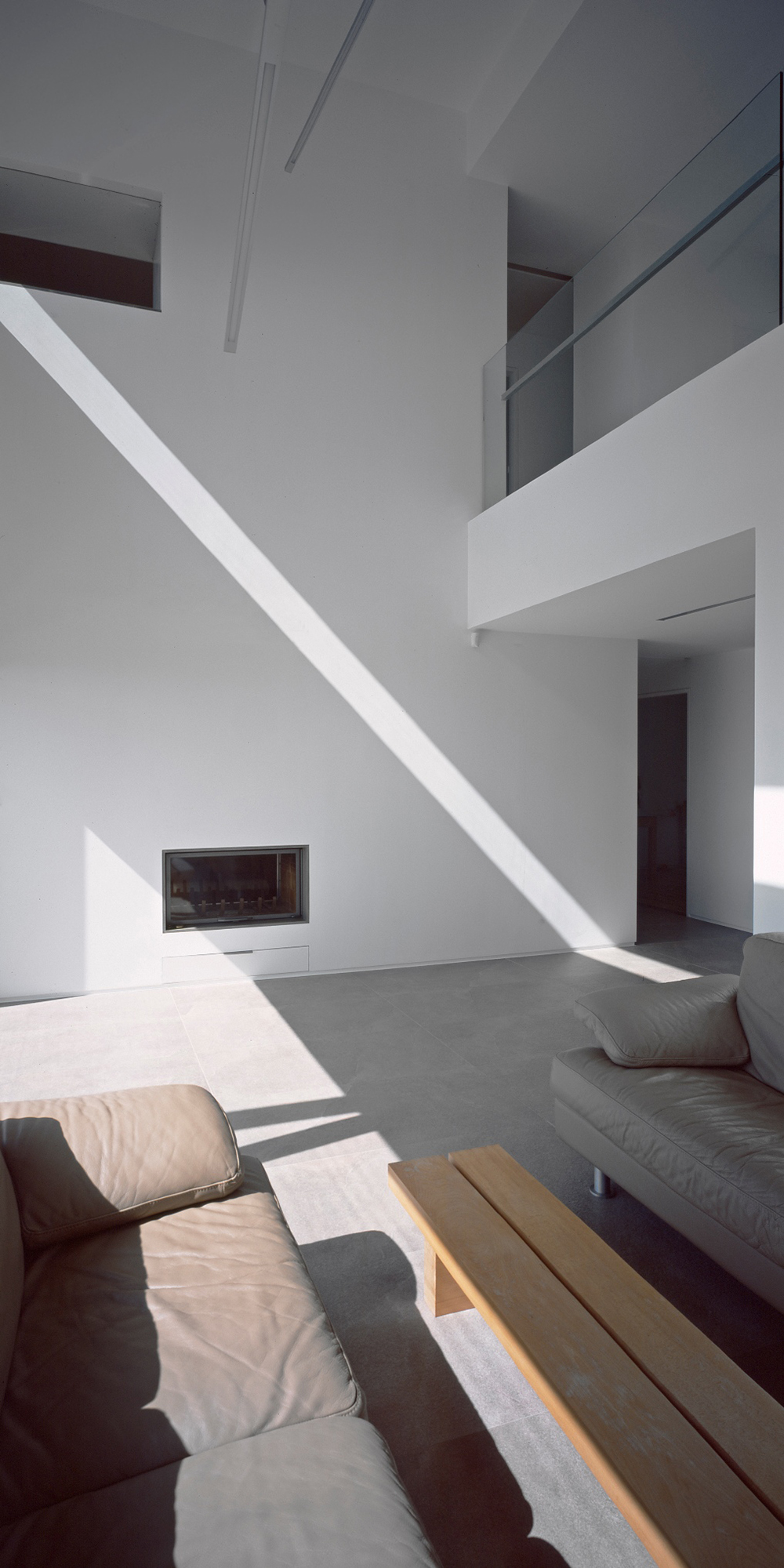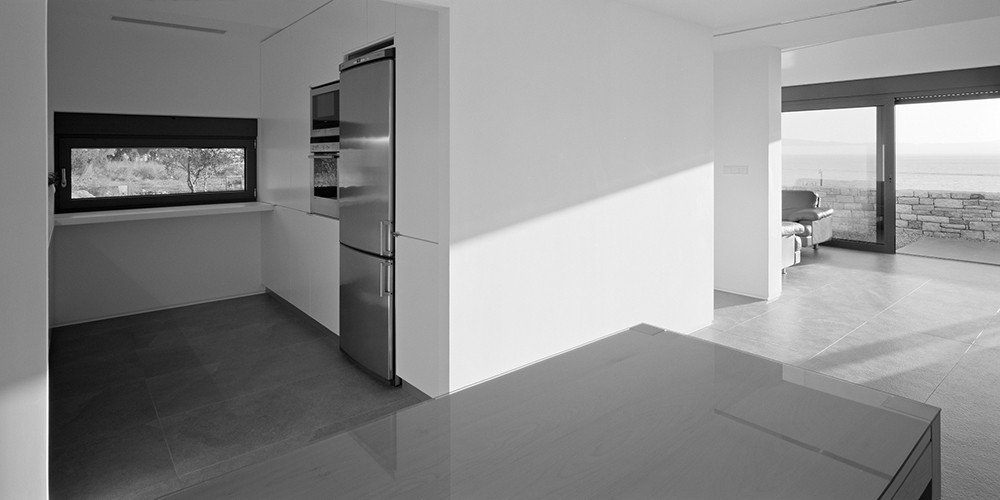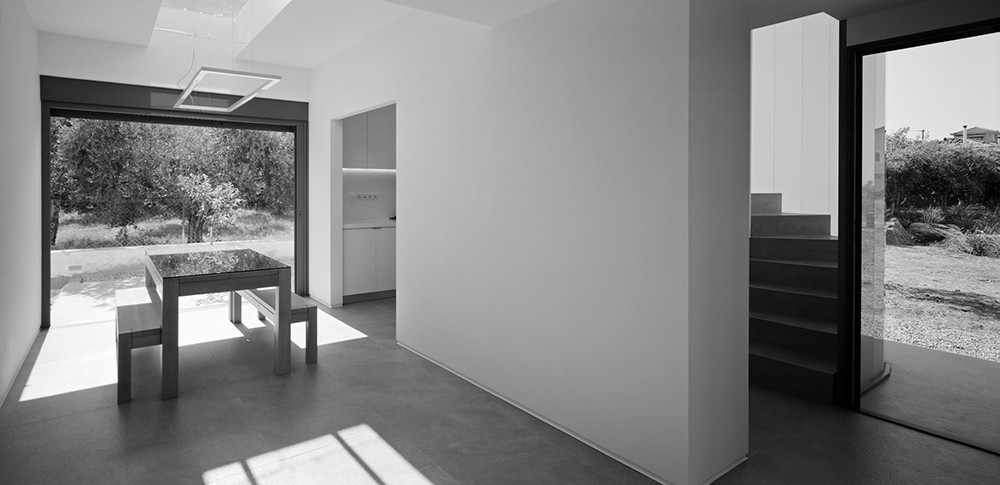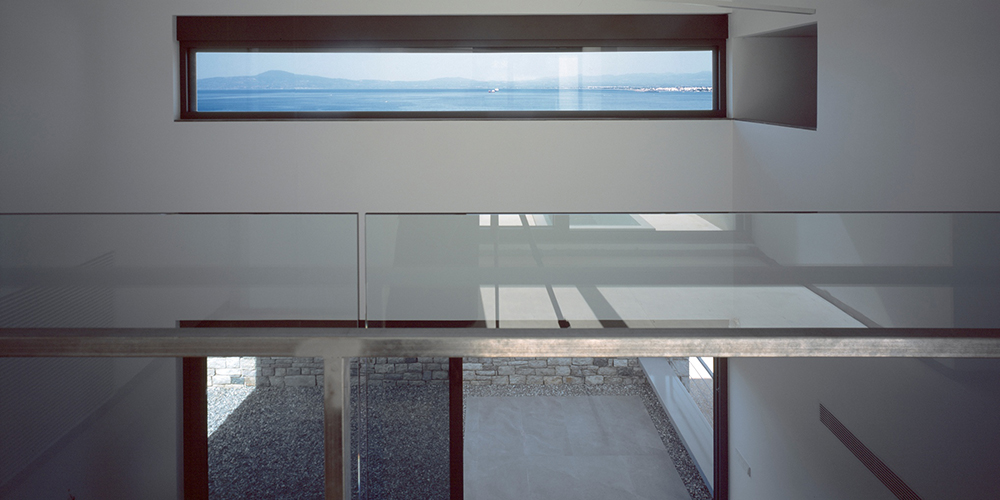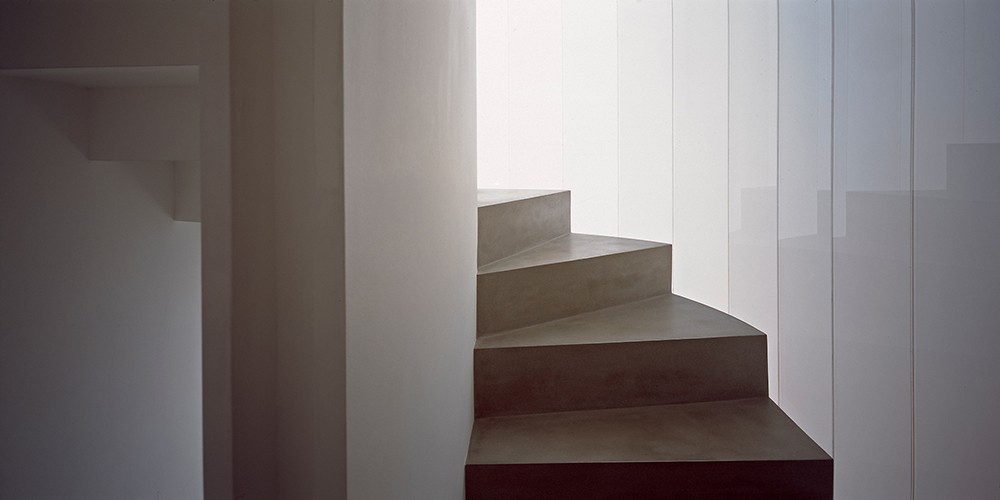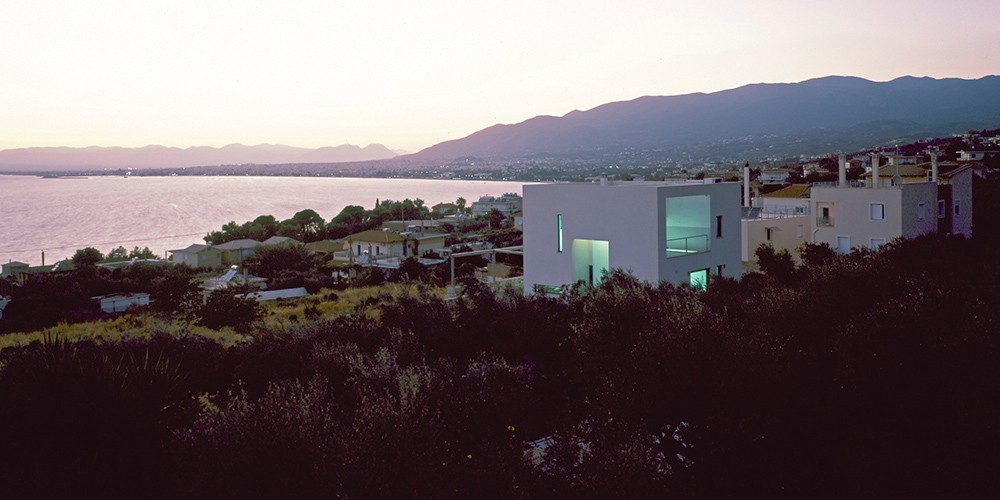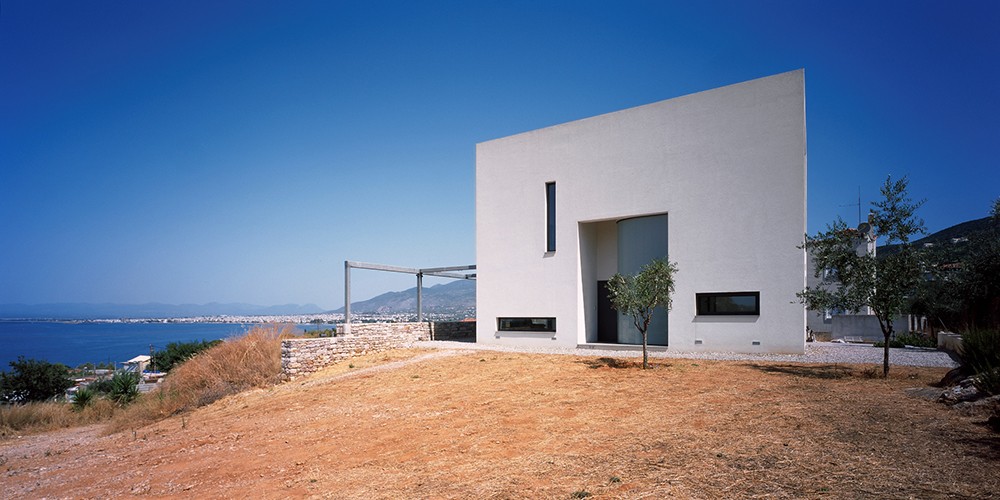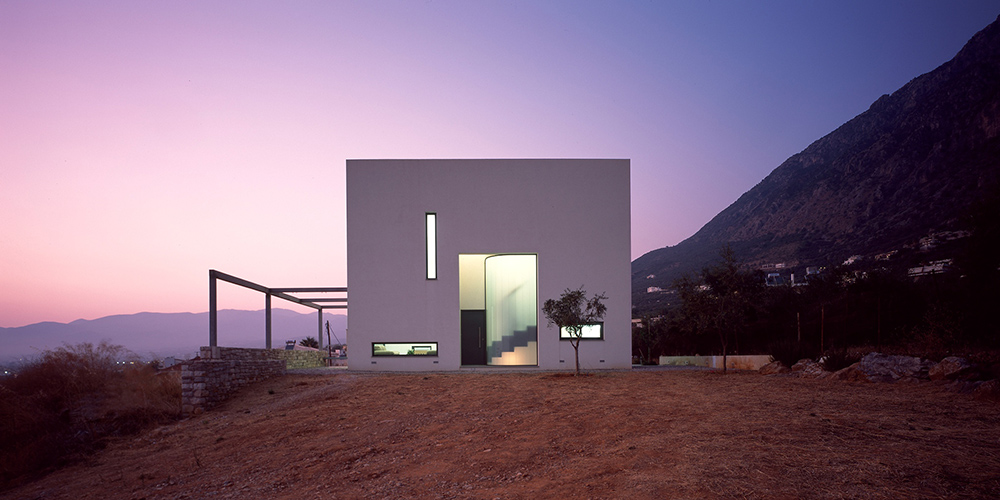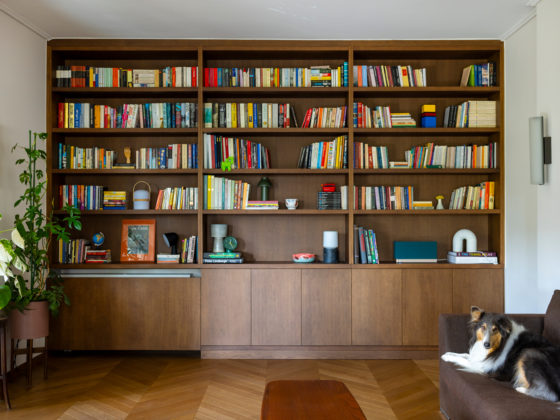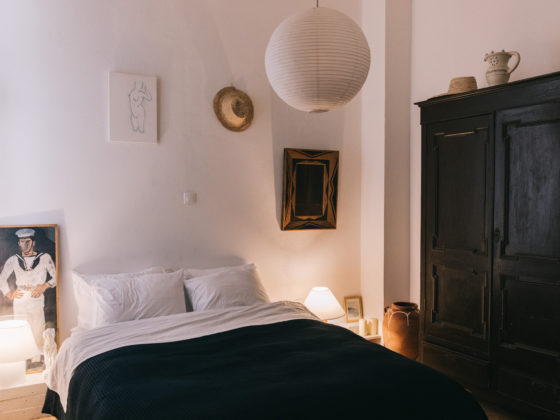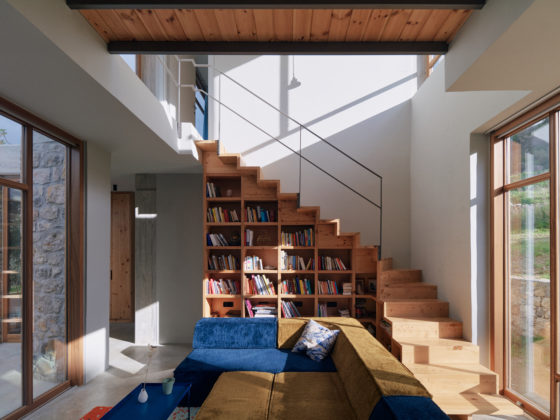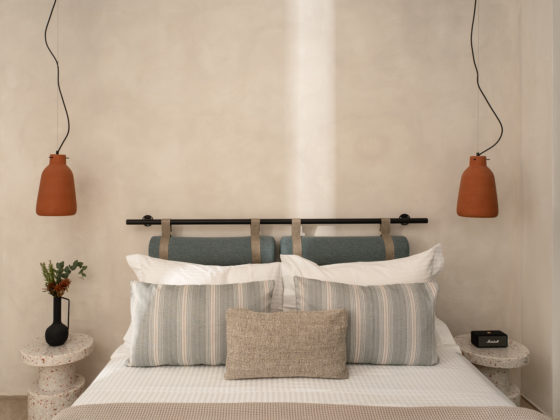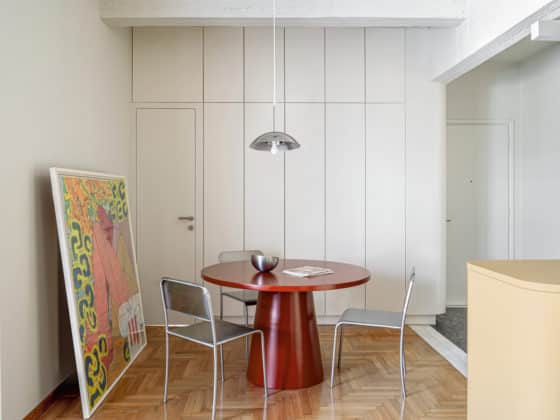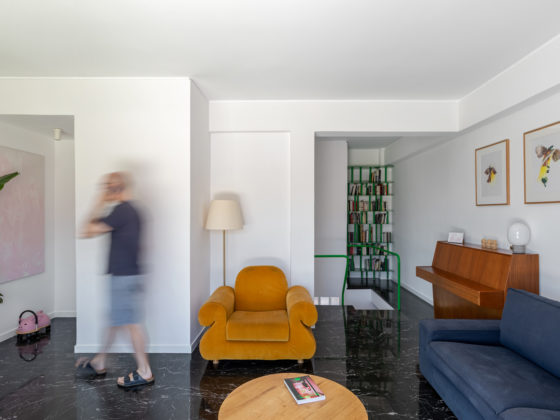Tower house interprets the type of dwelling widely found throughout the Outer Mani, Messenia Greece; a combination of defense tower and farmhouse, articulated into a monolithic, stone structure with few apertures, so as to protect residents from excessive heat as well as the threat of piracy.
The surrounding landscape is characterized by dry stone retaining walls, transforming a steep topography into a stepped series of arable strips. These long walls have been the most prominent man-made intervention in this harsh landscape for centuries. The new tower house contemplates exactly this: a mass among the existing preserved retaining walls and a few new concrete ones. There are no seams in the white, stucco facades, only the dark frames of the windows. No features project from the main volume, except the steel frame in front of the main view, which accommodates temporary screens.
The interior of the box, articulated by the double-height living-room and the shallow dining area emphasizes the idea of Mani topography: infinite view of the sea from the living area and close proximity of the olive orchard to the dining area and the kitchen. The interior embraces a protected and quite-zone area on the second floor, as the core of the dwelling. The design of the dwelling also serves a formal, cultural practice: the figure division of the house and its allotment to members of the next generation. Thus both levels share common typology. The staircase is located in a transitional semi-open entrance area, so to serve both future dwellings.
